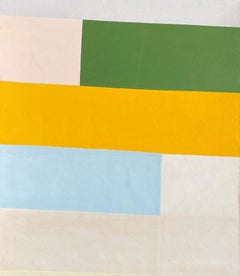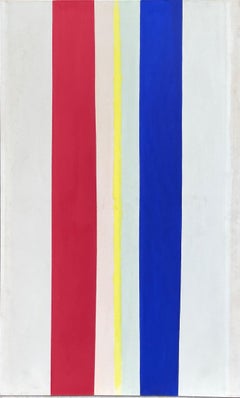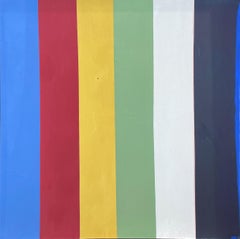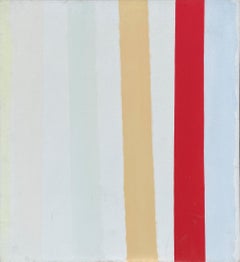Want more images or videos?
Request additional images or videos from the seller
1 of 8
Tadasky / Tadasuke Kuwayama"#B-119" Tadasky, Op-Art, Psychadelic Illusion Pattern, Concurrent Circles1964
1964
Price:$14,000
$22,000List Price
About the Item
About the Seller
5.0
Platinum Seller
Premium sellers with a 4.7+ rating and 24-hour response times
Established in 2022
1stDibs seller since 2022
132 sales on 1stDibs
Authenticity Guarantee
In the unlikely event there’s an issue with an item’s authenticity, contact us within 1 year for a full refund. DetailsMoney-Back Guarantee
If your item is not as described, is damaged in transit, or does not arrive, contact us within 7 days for a full refund. Details24-Hour Cancellation
You have a 24-hour grace period in which to reconsider your purchase, with no questions asked.Vetted Professional Sellers
Our world-class sellers must adhere to strict standards for service and quality, maintaining the integrity of our listings.Price-Match Guarantee
If you find that a seller listed the same item for a lower price elsewhere, we’ll match it.Trusted Global Delivery
Our best-in-class carrier network provides specialized shipping options worldwide, including custom delivery.You May Also Like
Urban Abstraction (ripped off posters) Italian Expressionist Painting on Canvas
By Andrea Spinelli
Located in Firenze, IT
The present work of art titled "Urban Abstraction (ripped off posters)" is part of a series of paintings that the artist composed in the 1980s and 1990s inspired by the observation of the urban reality of those years.
The artist take the cue from his walks in Florence, both in the center and in the suburbs, and by the observation of billboards and posters scattered throughout the city.
The mass of information, colors, messages and words were carried on the canvas with acrylic colors, ideally reconstructing the tears and overlaps of all the information and advertising contained on these huge sheets of paper that invade our cities.
The geometric lines are overlaid with jagged lines, overlaps and color dripping and also the choice in the color palette, with different shades of white, gray, rose, orange red and blue helps in rendering the result of the tears and ripped paper.
The result is a beautiful multicolored modern abstract canvas, both aesthetically and ethically, with many rich layers of color, texture and expression in which the artist leaves his own message.
The painting is housed in a simple modern white lacquer wood frame.
Andrea Spinelli...
Category
Late 20th Century Abstract Expressionist Abstract Paintings
Materials
Canvas, Acrylic
$1,437
H 20.87 in W 32.68 in D 1.19 in
Hearts Ablaze
Located in Fresno, CA
This edge filled canvas illustrates a dichotomy of calmness and chaos utilizing an intentionally limited palette, primarily of gold and deep purple. “Hearts Ablaze” invites the eye t...
Category
2010s Abstract Abstract Paintings
Materials
Canvas, Acrylic
Variables
By Ed Touchette
Located in Gloucester, MA
Ed Touchette (b. 1948) is inspired by a love of architecture and public spaces to make paintings which express joyful wonder at our built environment — ol...
Category
2010s Bauhaus Abstract Paintings
Materials
Canvas, Acrylic
Back and Forth
By Diane Ayott
Located in Gloucester, MA
Diane Ayott’s abstractions on paper, canvas, and panel are luxuriously physical objects resulting from the accrual of layer after layer of paint, color, and pattern, launched by imag...
Category
2010s Abstract Abstract Paintings
Materials
Canvas, Mixed Media, Acrylic
Softly
Located in Gloucester, MA
Patton Blackwell's "Softly" comprises four gallery-wrapped canvases 71 x 31.5 in. each, 71 x 126 in overall. It can be hung on the wall as a painting,...
Category
1990s Abstract Abstract Paintings
Materials
Canvas, Acrylic
Study of Lexicon
By RETNA
Located in Beverly Hills, CA
Retna's art is critiqued as a unique, transcultural visual language blending calligraphy, graffiti, and hieroglyphs, offering a meditative, rhythmic experience that challenges viewer...
Category
2010s Abstract Abstract Paintings
Materials
Enamel
Abstract B3
Located in San Juan, PR
CARLOS MERCADO
ABSTRACT
Inspired in the work of Franz and Ives Klein
This body of work was produced during the initial months of the lock down due to the pandemic. This tragedy crea...
Category
2010s Abstract Abstract Paintings
Materials
Canvas, Acrylic
Big bang Abstract 3
Located in San Juan, PR
CARLOS MERCADO
ABSTRACT
Inspired in the work of Franz and Ives Klein
This body of work was produced during the initial months of the lock down due to the pandemic. This tragedy crea...
Category
2010s Abstract Abstract Paintings
Materials
Canvas, Acrylic
Abstract B1
Located in San Juan, PR
CARLOS MERCADO
ABSTRACT
Inspired in the work of Franz and Ives Klein
This body of work was produced during the initial months of the lock down due to the pandemic. This tragedy crea...
Category
2010s Abstract Abstract Paintings
Materials
Canvas, Acrylic
Abstract B2
Located in San Juan, PR
CARLOS MERCADO
ABSTRACT
Inspired in the work of Franz and Ives Klein
This body of work was produced during the initial months of the lock down due to the pandemic. This tragedy crea...
Category
2010s Abstract Abstract Paintings
Materials
Canvas, Acrylic
More From This Seller
View All"Untitled" Calvert Coggeshall, Abstract Expressionism Hard-edge Stripes
Located in New York, NY
Calvert Coggeshall
Untitled, circa 1975
Oil on canvas
50 x 40 inches
Calvert Coggeshall worked as an abstract painter and interior designer primari...
Category
1970s Abstract Expressionist Abstract Paintings
Materials
Canvas, Acrylic
"Meridian" Calvert Coggeshall, Abstract Expressionism Hard-edge Vertical Stripes
Located in New York, NY
Calvert Coggeshall
Meridian, 1974
Signed, titled, and dated on the reverse
Acrylic on canvas
67 x 45 inches
Calvert Coggeshall worked as an abstrac...
Category
1970s Abstract Expressionist Abstract Paintings
Materials
Canvas, Acrylic
"Illumination" Calvert Coggeshall, Abstract Expressionism, Hard-edge Stripes
Located in New York, NY
Calvert Coggeshall
Illumination, 1973
Signed, titled, and dated on the reverse
Acrylic on canvas
65 x 67 inches
Calvert Coggeshall worked as an abs...
Category
1970s Abstract Expressionist Abstract Paintings
Materials
Canvas, Acrylic
"A Stripe" Calvert Coggeshall, Abstract Expressionism, Hard-edge Vertical Lines
Located in New York, NY
Calvert Coggeshall
A Stripe, 1971
Signed, titled, and dated on the reverse
Acrylic on canvas
30 x 30 inches
Calvert Coggeshall worked as an abstrac...
Category
1970s Abstract Expressionist Abstract Paintings
Materials
Canvas, Acrylic
"Notes XXI" Calvert Coggeshall, Abstract Expressionism Hardedge Vertical Stripes
Located in New York, NY
Calvert Coggeshall
Notes XXI, 1973
Signed, titled, and dated on the reverse
Japanese pigment on canvas
29 x 29 inches
Calvert Coggeshall worked as ...
Category
1970s Abstract Expressionist Abstract Paintings
Materials
Canvas, Acrylic
"Notes XX" Calvert Coggeshall, Abstract Expressionism Hard-edge Vertical Stripes
Located in New York, NY
Calvert Coggeshall
Notes XX, 1970
Signed, titled, and dated on the reverse
Acrylic on canvas
30 1/4 x 30 1/4 inches
Calvert Coggeshall worked as an...
Category
1970s Abstract Expressionist Abstract Paintings
Materials
Canvas, Acrylic



